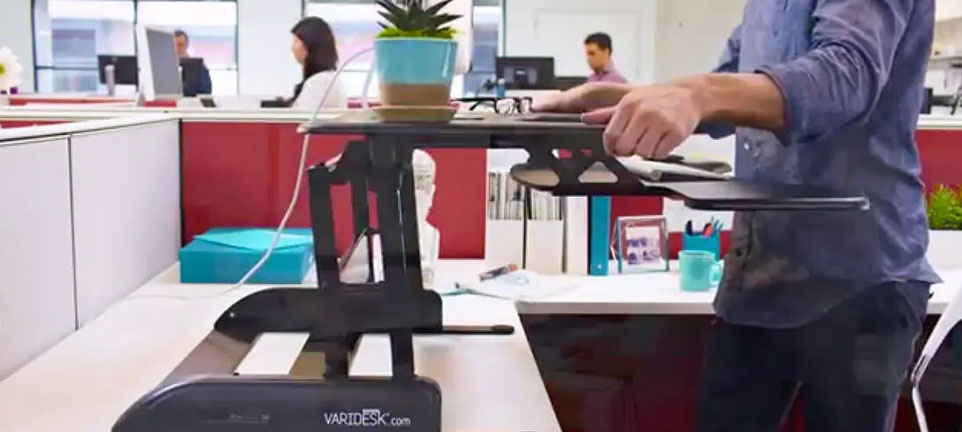
-
Free Parking Available
-
Wheelchair Access
-
Close to Public Transport


One of the new trends in office design is the standing desk. The goal of these standing desks is to get people to sit less. Some authors have gone so far as to equate sitting to smoking (Buckley, et al., 2015).
While I don’t think I would go quite that far, it would appear that such activities have a negative overall effect on our health.
Research presented at the British Psychological Society’s Annual Occupational Conference (Duncan, Kazi and Haslam, 2015) stated that, in a typical working week, people spend four hours and 41 minutes per day sitting at their desks. (And that doesn’t count the time they spend seated in their cars, while eating, and watching television.) Whatever the final numbers are, it is fair to say that we spend a lot of time sitting. Would standing more be beneficial to our health? Let’s take a look…
Standing: Pros & Cons
One of the alternatives to sitting all day is standing while at work. Some of the advantages of standing are:
It takes more energy (calories) to stand than it does to sit. Livestrong states that standing uses 20-50 more calories per hour than sitting, depending upon your size. That equates to 8-20 pounds during the course of a year (www.livestrong.com, 2014).
Given that Americans tend to be larger today than in years past, standing makes some sense, particularly if you’re trying to lose weight.
Unfortunately, standing isn’t a panacea. Prolonged standing also comes with a health risk. It can lead to:
Anyone who spends the work day standing in place (e.g., grocer checkers) can tell you about the problems they encounter as a result of prolonged standing.
Alternating between standing and sitting is probably a healthier alternative. It has been suggested that workers should stand for two hours each work day and gradually increase to four hours (Biswas, et al., 2015). That’s half the day standing and half sitting.





